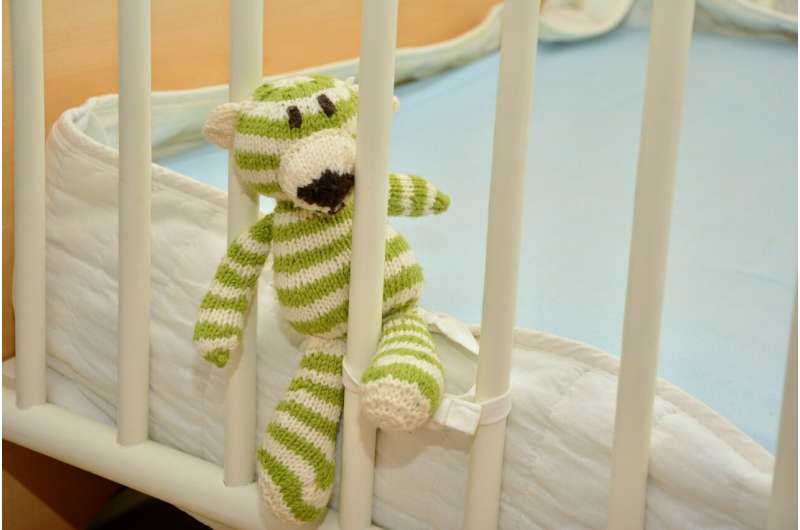This article has been reviewed according to Science X's editorial process and policies. Editors have highlighted the following attributes while ensuring the content's credibility:
fact-checked
trusted source
proofread
Sudden infant death syndrome may have biologic cause

Sudden infant death syndrome (SIDS) is a case where the death of an apparently healthy infant before their first birthday remains unexplained even after thorough investigation. Death generally seems to occur when infants are sleeping.
While rare, it is the leading post-neonatal infant death in the United States today, occurring in 103 out of 100,000 live births a year. Despite the initial success of national public health campaigns promoting safe sleep environments and healthier sleep positions in infants in the 1990s in the United States, rates of cases have remained the same over the last three decades.
Researchers here collected tissue from the San Diego Medical Examiner's Office related to infant deaths between 2004 and 2011. They then examined the brain stems of 70 infants who died during the period and tested them for consistent abnormalities.
They found that the serotonin 2A/C receptor is altered in sudden infant death cases compared to control cases of infant deaths. Previous research in rodents has shown that 2A/C receptor signaling contributes to arousal and autoresuscitation, protecting brain oxygen status during sleep. This new research supports the idea that a biological abnormality in some infants makes them vulnerable to death under certain circumstances.
The investigators here believe that sudden infant death syndrome occurs when three things happen together: a child is in a critical period of cardiorespiratory development in their first year, the child faces an outside stressor like a face-down sleep position or sharing a bed, and the child has a biological abnormality that makes them vulnerable to respiratory challenges while sleeping.
"The work presented builds upon previous work by our laboratory and others showing abnormalities in the serotonergic system of some SIDS infants," says the paper's lead author, Robin Haynes.
"Although we have identified abnormalities in the serotonin 2A/C receptor in SIDS, the relationship between the abnormalities and cause of death remains unknown."
"Much work remains in determining the consequence of abnormalities in this receptor in the context of a larger network of serotonin and non-serotonin receptors that protect vital functions in cardiac and respiratory control when challenged. Currently, we have no means to identify infants with biological abnormalities in the serotonergic system. Thus, adherence to safe-sleep practices remains critical."
The research is published in the Journal of Neuropathology & Experimental Neurology.
More information: Robin Haynes et al, Altered 5-HT2A/C receptor binding in the medulla oblongata in the sudden infant death syndrome (SIDS): part I. Tissue-based evidence for serotonin receptor signaling abnormalities in cardiorespiratory- and arousal-related circuits, Journal of Neuropathology & Experimental Neurology (2023). DOI: 10.1093/jnen/nlad030



















